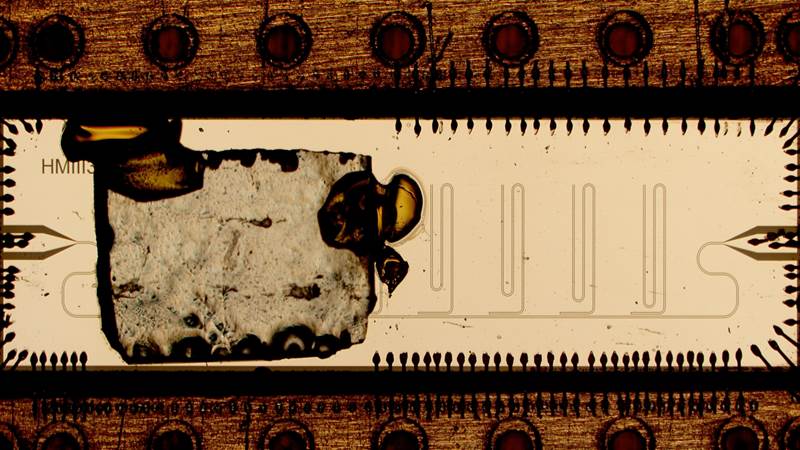Electron
paramagnetic resonance (EPR) is commonly used to manipulate and measure the
magnetic moments (or spins) of electrons.
IRG-D researchers at the Princeton Center for Complex Materials (PCCM)
have demonstrated a 100 fold improvement in sensitivity to the electrons’ spins
by combining long-coherence donor electrons in isotopically
enriched silicon with superconducting Nb
microresonators.1 The PCCM researchers have previously shown
that these donor impurities, each binding one electron, exhibit exceptionally
long quantum coherence. The microresonators
allow them to work with much smaller numbers of electrons, especially electrons
near surfaces where they can be employed as qubits in quantum devices.

Fig.
1 Photograph of a group of
superconducting microresonators (the
S-shaped patterns on the right half of the device) etched into a Nb
film. A piece of silicon with a thin, isotopically
enriched layer containing phosphorus donor impurities is mounted over some of
the resonators on the left. The microwave magnetic field extends about a
thousandth of an inch above the resonators, thus probing only the thin isotopically
enriched silicon layer